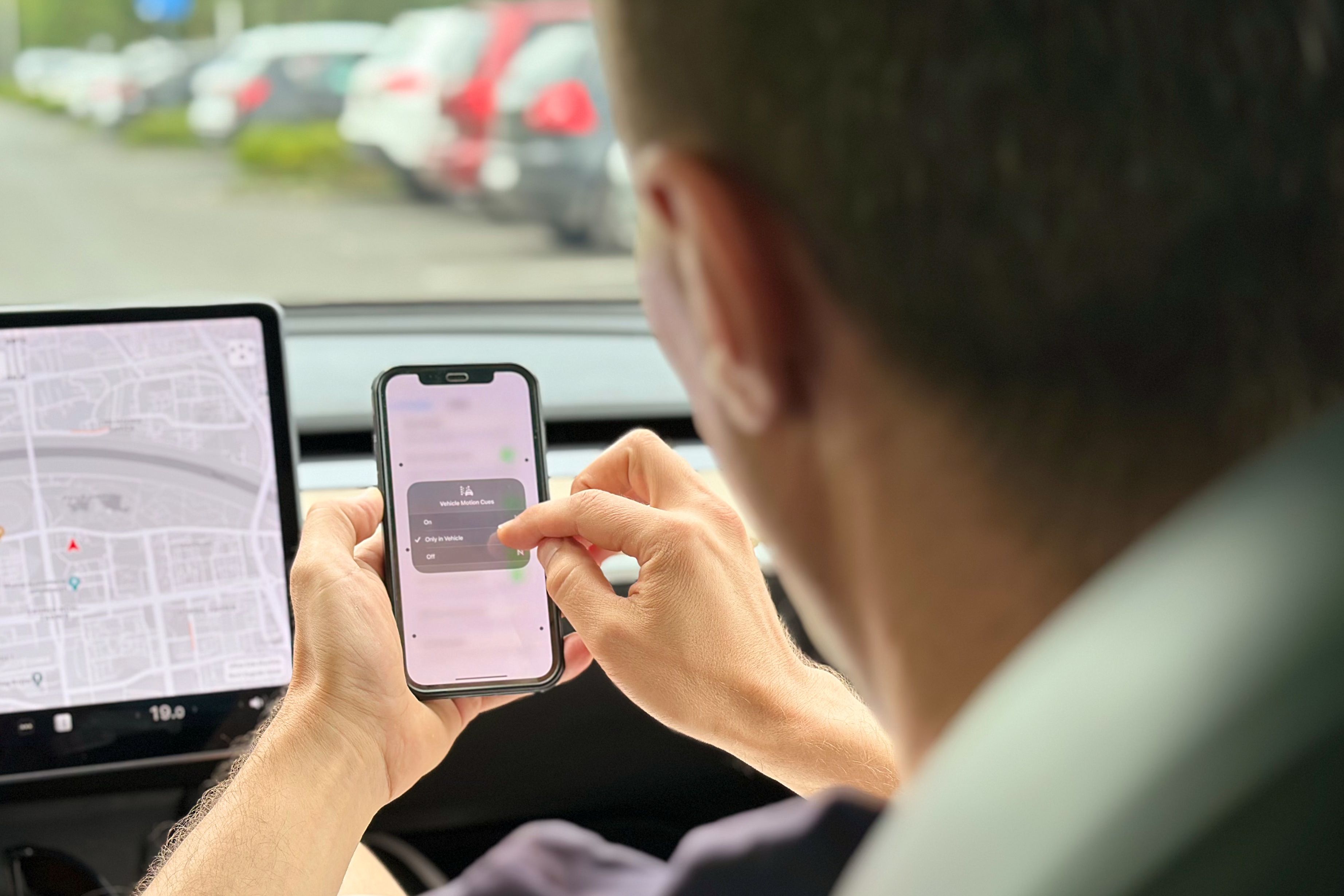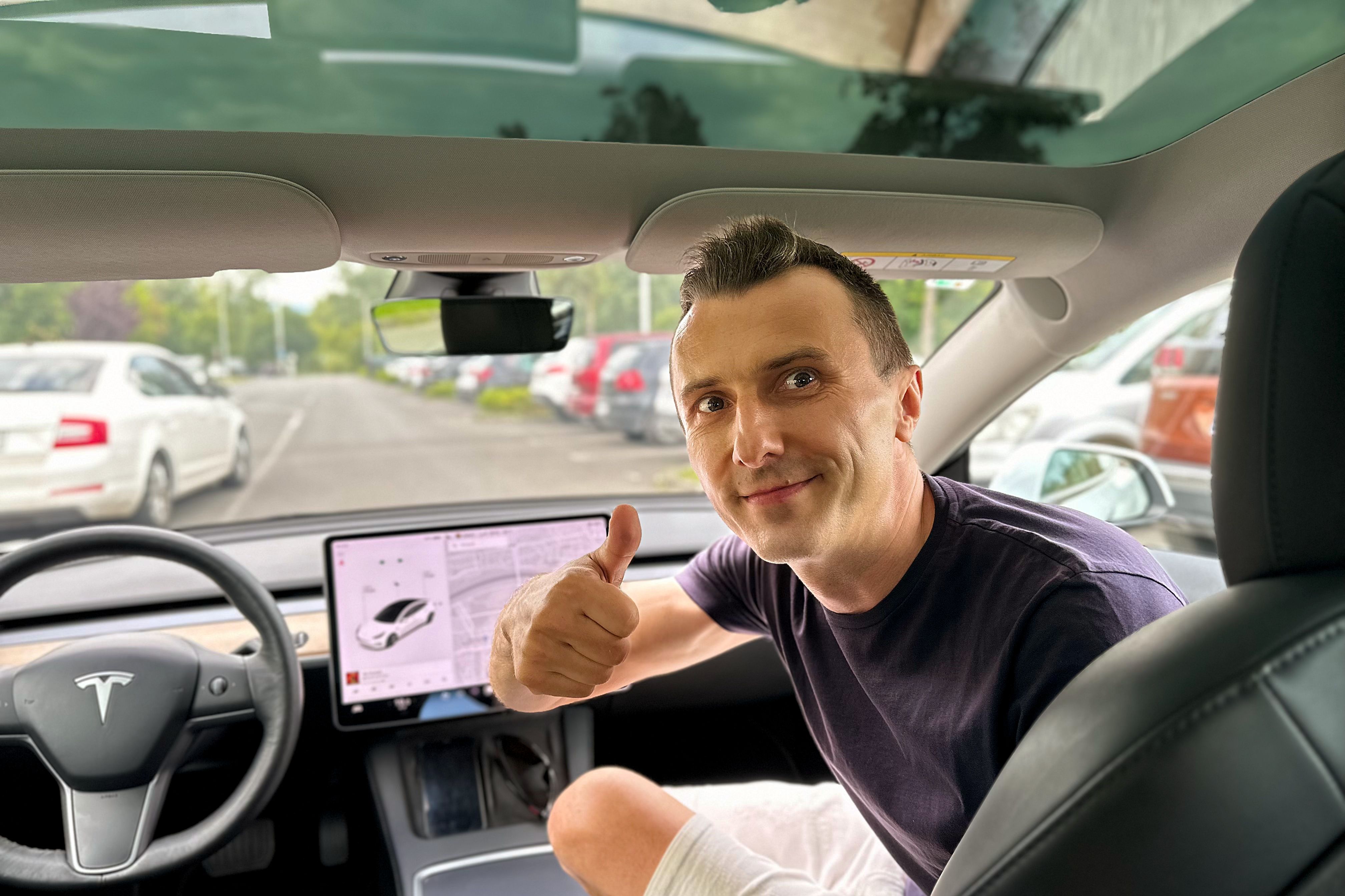Key Takeaways
- Apple’s new accessibility feature, Vehicle Motion Cues, helps reduce motion sickness while using iPhone in a moving vehicle.
- Vehicle Motion Cues displays dots on the screen that shift with the vehicle’s movement, reducing the chances that motion sickness will be triggered..
- While not a universal solution, Vehicle Motion Cues is a practical accessibility feature for those with motion sickness, though there’s room for improvement in future updates.
I get headaches and nausea from using my iPhone in the car, but Apple’s new accessibility feature helps keep my motion sickness under control. With it, I can browse the web, use Maps, and check Instagram during short rides without significant issues.
I’ve Been Motion Sick All My Life
I cannot read anything in a moving vehicle for more than a few seconds without immediately feeling dizzy. Standing in a boat unmistakably triggers my motion sickness, as does moving up and down in a plane. I start hyperventilating, getting nauseous, feeling unwell, and experiencing typical symptoms of motion sickness, often to the point of vomiting.
Just like the iPhone has motion sensors, the body gets signals about its position in space from nerve endings in the muscles and inner ear. This acts like a finely tuned internal gyroscope with a direct connection to the eyes, capable of picking up the slightest movement.
I’ve learned that motion sickness happens because of a sensory disconnect between what your eyes and body feel and what your brain perceives. With excessive motion, the brain receives contradictory information from its “motion sensors,” throwing you off.
When looking at your iPhone or iPad’s screen whilst sitting in a moving vehicle, sensors in your body pick up movement but all your eyes see is static content.
Enter Vehicle Motion Cues
To say I was excited to read about Vehicle Motion Cues arriving in iOS 18 would be an understatement. At long last, Apple promises a solution for folks like myself who avoid using their iPhone as a passenger in a vehicle over fear of inducing motion sickness.
To test Vehicle Motion Cues, I installed the iOS 18 beta and went to Settings > Accessibility > Motion to enable “Show Vehicle Motion Cues.” Careful not to overpromise and underdeliver, Apple says the feature “may help reduce motion sickness” rather than state it as a fact.
Taking Vehicle Motion Cues for a Spin
To my surprise, the dots didn’t automatically appear during my next trip, and I had to enable the feature manually in the Control Center. I did this by swiping down from the top-right of the screen.
I was confused the first time I used Vehicle Motion Cues. I expected to only see the dots alongside the left and right edges as the car accelerated and decelerated. I was surprised to find them shifting horizontally as the car made turns. And they’re there no matter the app used, persisting even on the Home Screen, in the Notification Center, and so on.
As my mind was processing all this, I realized I’d been staring at the screen for a couple of minutes already without feeling like I was going to throw up any second. For the next month or so, I would ask my partner to drive our car as we ran daily errands so that I could extensively test Vehicle Motion Cues as a passenger.
So, How Did It Go?
I’m happy to report that I’ve felt a marked difference during my extended time with Vehicle Motion Cues. I hadn’t fully grasped how car-sick my iPhone made me until I tried this feature.
Don’t get me wrong. I’m not the overenthusiastic type, so I definitely wasn’t fooling myself that Vehicle Motion Cues would magically cure my motion sickness, nothing can. But I can attest to it alleviating motion sickness when using my iPhone in a moving vehicle.
Before, I would stare at a fixed point when traveling. But now I can at least use my iPhone in the car for brief interactions like checking notifications and responding to important messages without starting to sweat and going pale after just a few seconds.
Vehicle Motion Cues may be the most practical accessibility feature I’ve experienced on my iPhone, but that doesn’t make it a universal solution for all people. What works for me may not meet your needs. Some folks won’t feel much different with Vehicle Motion Cues turned on, so they’ll need to try the feature to see what it does for their motion sickness.
There’s Room for Improvement
The feature takes a while to turn on after the vehicle starts moving, which has been ticking me off. I’d rather it “just worked” though I’m chalking this up to its beta state.
I was also left wishing that I could adjust the size and colors of the dots to account for my astigmatism. And while we’re at it, why not have onscreen prompts reminding me to restrict my iPhone usage in a moving car to brief interactions? Surely Siri can figure out when I should put my device down just before I’m about to get car-sick?
This is just the beginning. Apple listens to user feedback and has plenty of time to perfect Vehicle Motion Cues during the beta phase and with future updates to iOS 18.
Rough edges aside, I couldn’t be happier that Vehicle Motion Cues exists. It’s long overdue, but as the saying goes, it’s better late than never!
Having Vehicle Motion Cues baked deep into the bowels of the operating system is a huge plus. No longer will I be frantically combing through the App Store in search of “specialized” apps that promise to cure motion sickness, but instead waste my time and never deliver.
Vehicle Motion Cues is among the new accessibility features in iOS 18 that we think everyone should use although you’ll need to wait until it’s publicly available in the fall.
Until then, those living on the bleeding edge of technology (that includes you, my friend) are free to test-drive Vehicle Motion Cues when the iOS 18 Public Beta drops later in July.






